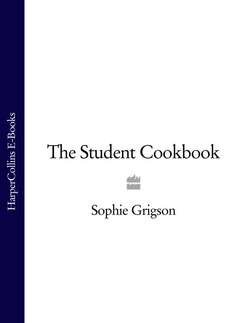Читать книгу The Student Cookbook - Sophie Grigson, Sophie Grigson - Страница 7
Weights and Measures
ОглавлениеRecipes, as I’ve already said, are merely a set of guidelines and recommendations. This is as true of the ingredients list as of the method. As a beginner it is advisable to stick to the given quantities and suggested ingredients – as you become more familiar with a particular recipe, you can start to play around to a certain extent. In some instances it is fine to deviate slightly from given amounts where common sense dictates. Suppose, for instance, that a potato salad calls for 450g(1 lb) potatoes – there is no need to cut off a third of one new potato to get exactly the right amount; a tiny bit more or less will make little difference.
The standard advice is to stick with either metric or imperial measurements and not to mix the two. This is probably what you will do anyway, but in truth it won’t make much difference in most recipes if you do mix them up. And always taste as you cook; adjust seasonings and balance of flavours to suit your taste and your ingredients. The one area demanding strict accuracy is baking.
Surprisingly small differences in the ratios of flour, fat, sugar, eggs and so on affect the way the cake turns out. So, no guess work, or slapdash weighing out here.
Spoon measurements Spoon measurements in this book are all rounded, unless otherwise indicated. I use a 5ml teaspoon, a 10ml dessertspoon and a 15ml tablespoon.
A sprig, a stem, a bunch or a handful? At first these terms will seem infuriatingly vague, but try to view them as opportunities to exploit your own personal tastes. If you really love the aroma of a certain herb, then make your sprig or handful big and generous. If it is new to you, you may prefer to err on the side of caution at first – reduce that sprig to a couple of inches, grab a petite handful. Soon the deliberate vagueness will become endearingly familiar.
